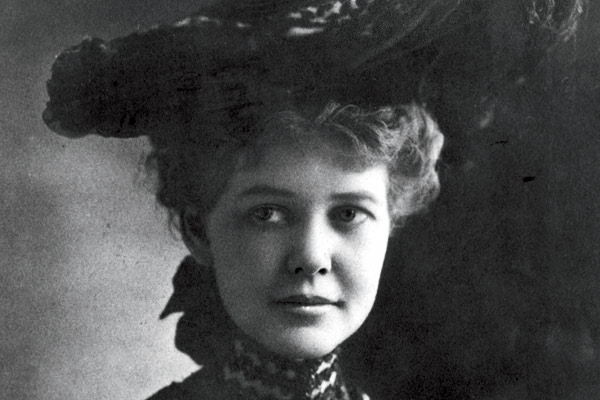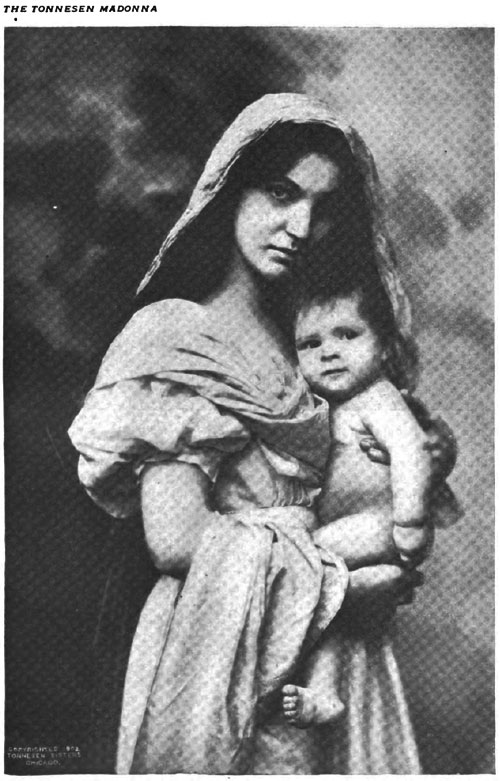
This month Chicago published its list of the 50 Most Beautiful Chicagoans. For me there was a historical echo: this is the city where the commercial art of taking pictures of pretty people began.
The young woman credited with first using photographs of models in advertising was Beatrice Tonnesen, the subject of a 2010 Chicago profile by Geoffrey Johnson; the retired school administrator who inspired Johnson's piece now runs a website devoted to Tonnensen. The Wisconsin native arrived in Chicago in the 1890s from Michigan, where she had started her first photography business and attained an "enviable reputation and considerable wealth," according to an undated article from her personal scrapbook. She and her sister ("one of those born managers who occasionally give a doubting world a glimpse of the business capabilities of the sex"*) left for the big city to buy a failing Chicago studio on Michigan Avenue; Tonnesen was in her early to mid-20s.

The studio was a huge success. The Chicago Daily News described the "New Fad For Advertisers" she'd started:
Pictures and designs drawn by artists are out of date, Miss Tonnesen thinks, and in their place has come the output of the camera. By photographing certain comely young maidens, shapely infants, or quaint characters, she supplies something to at once attract and entrance the eye of the prospective buyer and set the wheels of his brain a-buzzing in harmony with the idea the advertiser seeks to impress.
By the turn of the century, she had won wide renown. Before the age of 30, she'd become a sought-after high society photographer, and was chosen to address the International Congress of Photography in Paris (though according to Johnson's research, it's unclear whether she actually did). She was also a de facto modeling talent scout, whose methods were similar to those that have made American Apparel (in)famous:
"When I am walking along the street," she says, "or am in a story and see a person who strikes me as particularly desirable for a model I usually stop her right on the spot and tell her what I want. Of course, I have to use a little discretion, but I am almost never refused. People working in shops and stores often strike my fancy, and as a rule they are all willing to pose. It is this kind of people I use largely, with only a few models who make their entire living by posing for artists."
According to The Photogram (1898), it was the inevitable consequence of living in the Midwest:
Of course, if she had been in Paris or London, she would have naturally turned to the professional model, thereby avoiding some amount of trouble in posing and arrangement, but, probably, also losing much of the variety and spontaneity which give special charm to her work. Her experience has been that these non-professional models "are particularly pleased to see themselves in print, and enthusiastically enter into the spirit of the work."
Lois Emerson, who runs the Tonnesen website, has been trying to figure out who her models were. That many were amateurs makes it harder, but Emerson has identified several, including professional model Adelyne Slavik Schwill (wife of malt king Julius Schwill); you can see her in a more candid pose from the Daily News's archive at the Library of Congress.
Johnson's article and Emerson's site have many of Tonnesen's photos, but my favorite is the 1902 Tonnesen Madonna and child (via Google Books/The National, p. 609)

* If you look closely, you'll see that the picture above is credited to the "Tonnesen Sisters." Though Beatrice Tonnesen got most of the attention, it was Clara Tonnesen who kept the books and ran the business end of the studio. Beatrice's scrapbook includes an undated essay by her sister titled "Some Aspects of the Business Woman's Life":
The principles necessary to the success of a woman in business are the same as apply to a man. The common principles are trained ability, honesty and concentration of mind to the work. In other words, a singleness of purpose.
To a great success, must be added that far-sighted sagacity which is not taught or learned but born in a business person and developed by experience.


